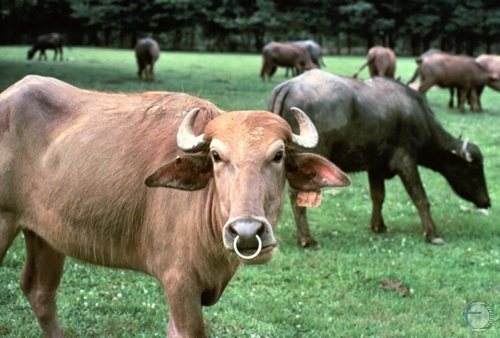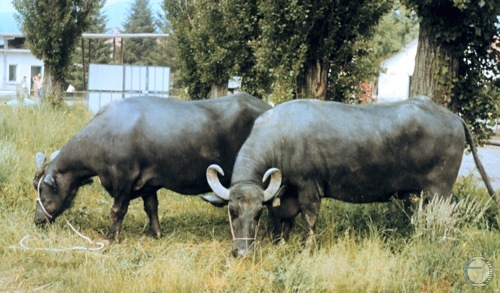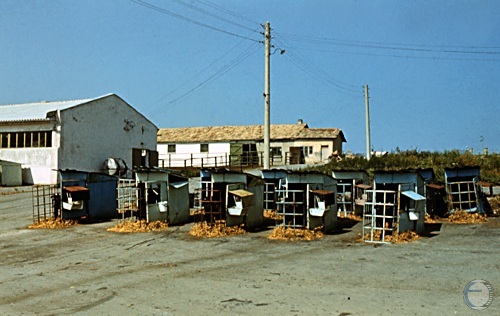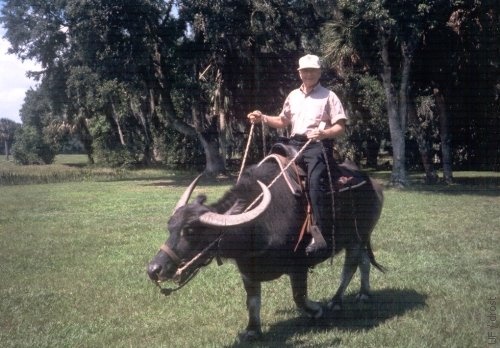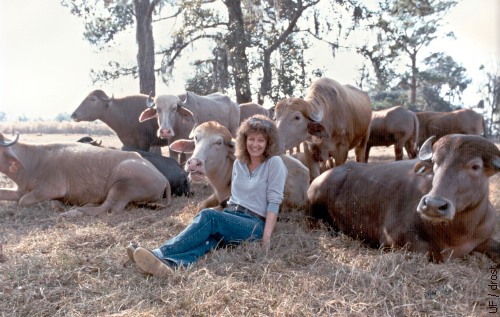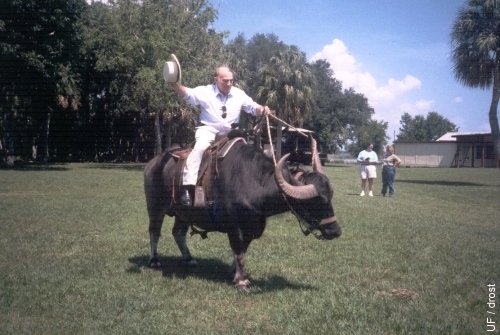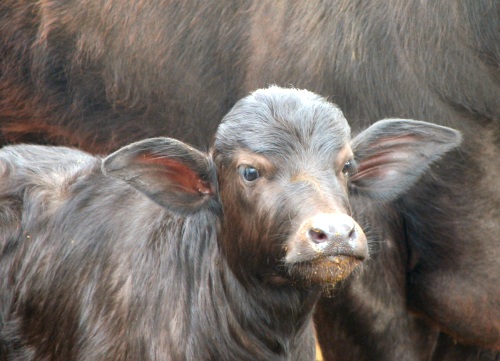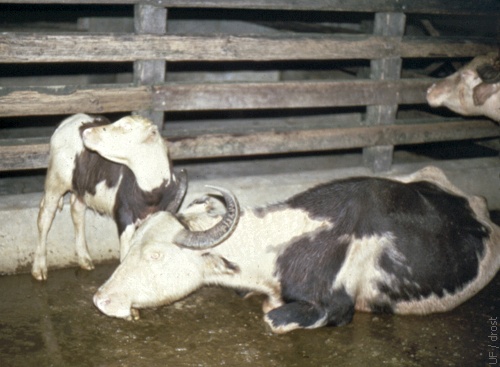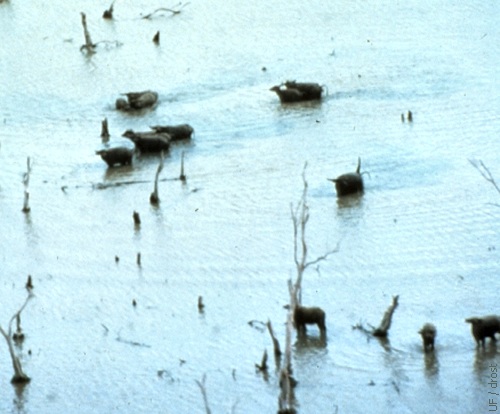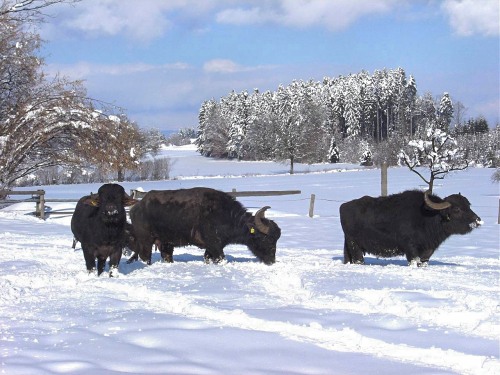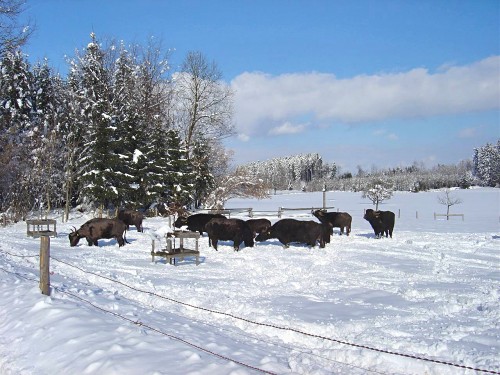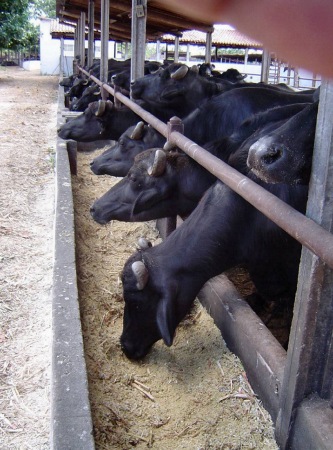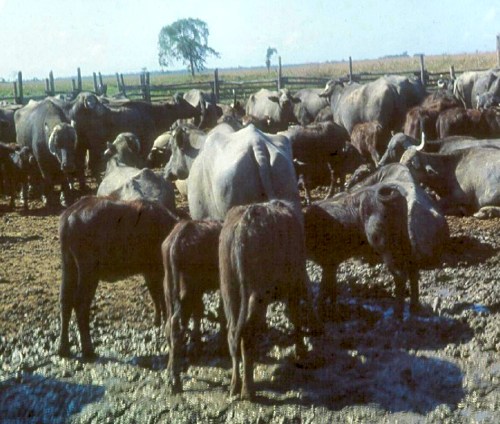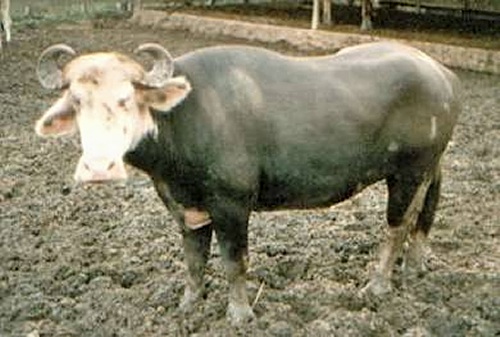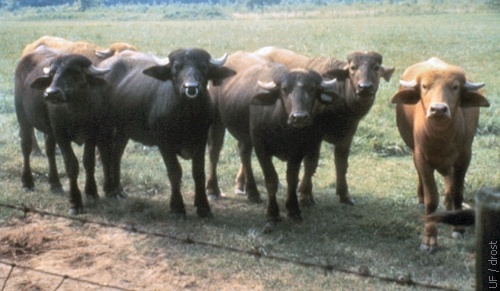
Buffalypso Heifer.
The blond buffalo on the right is a Buffalypso buffalo imported from Trinidad into the United States.
Drost M (1984)
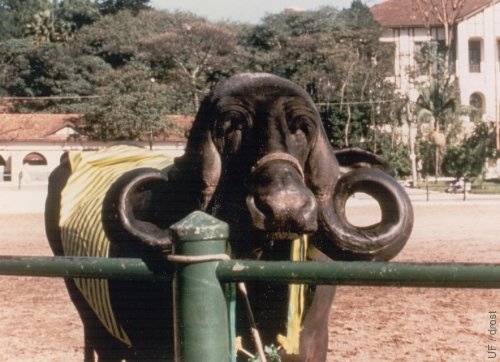
Jafarabadi.
Jafarabadi breed, with its characterictic downwards growing horns.
Cripe WS (1983)
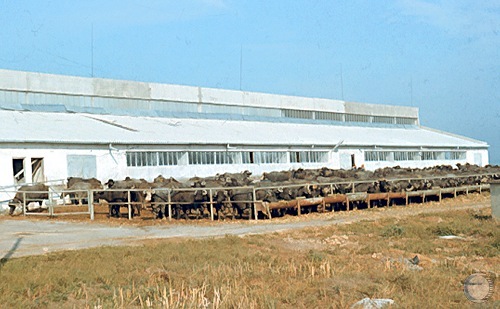
Bulgarian State Farm.
Buffalo Research Center in 1985, housing circa 1500 milking buffalo.
Drost M (1985)
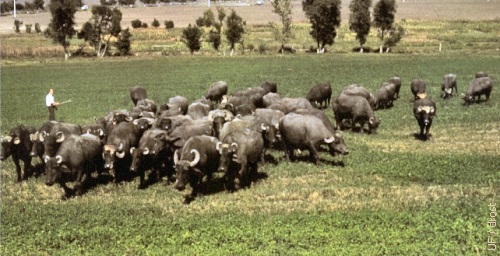
Bulgarian Buffalo.
Bulgarian dairy buffalo grazing in a cultivated pasture.
Drost M (1985)
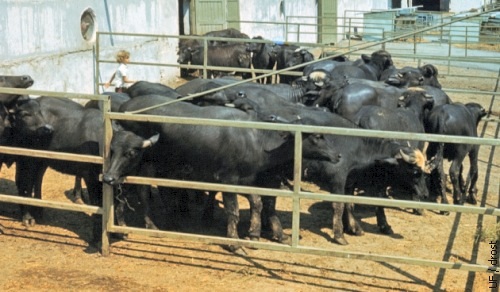
Tame Buffalo.
A young child in the upper corner of the pen can safely drive the buffalo from pen to pen. Note calf hutches in the upper background.
Drost M (1985)
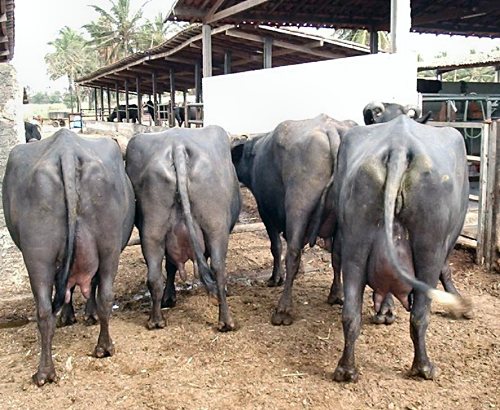
Brazilian Buffalo.
Brazilian Murrah buffalo capable of producing 4,500 liters of milk per 270-day lactation (Guatambu progeny).
Vale WG (2007)
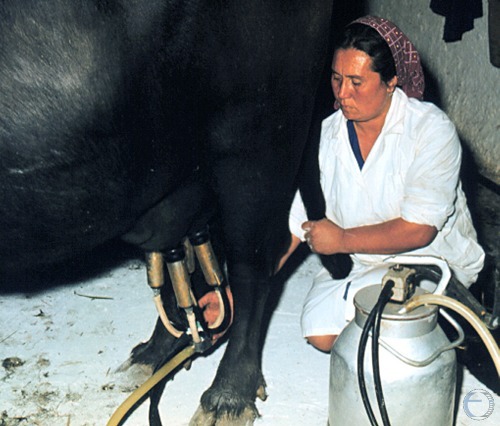
Machine Milking.
Milking time at a State Farm dairy in Bulgaria in 1985.
Drost M (1985)
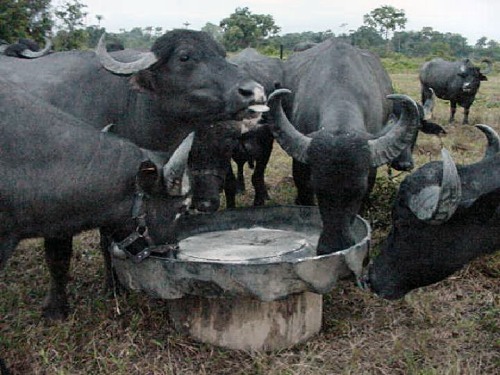
Mineral Supplementation.
Brazilian buffalo cows in a program of artificial insemination. Mineral supplementation is very important for achieving high fertility when AI is used.
Vale WG (2007)
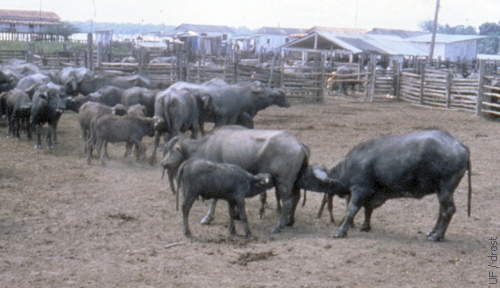
Communal Nursing.
Multiple calves suckling a dam, including a yearling heifer.
Vale WG (1987)
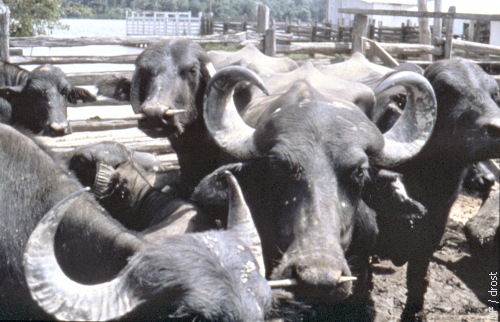
Anti-suckling Device.
An anti-suckling sharp-ended stick has been permanently placed through the nasal septum of an older animal to keep it from nursing lactating cows.
Vale WG (1987)
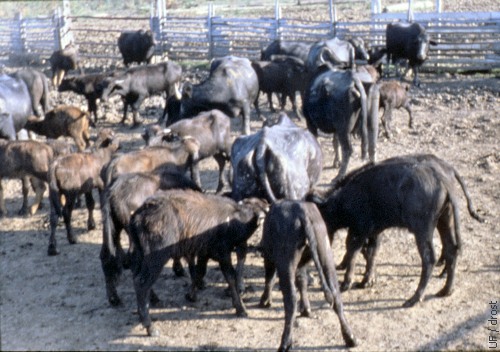
Nursing Multiple Calves.
When the milk supply is limited, calves will nurse any available, tolerant cow.
Vale WG (1987)
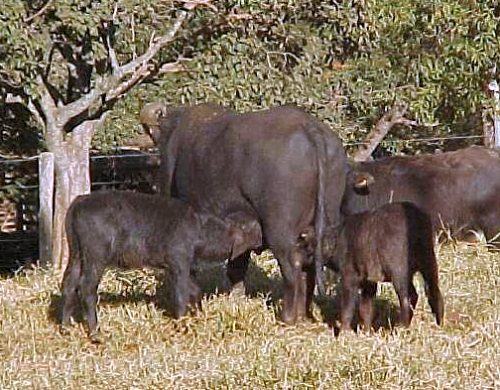
Nursing An Extra Calf.
In extensive and semi-extensive operations it is common for a buffalo to nurse more than one calf, in Brazil. This is one of the main causes for a prolonged calving interval.
Vale WG (2007)

Crossing the River.
Large group of water buffalo crossing the river.
Vale WG (1987)

Coming Ashore.
Buffalo coming ashore from a river in Brazil, coming in to be milked. Water buffalo are amphibious.
Vale WG (1987)
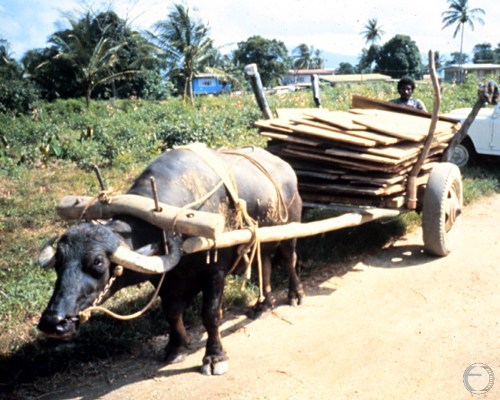
Living Tractor.
The buffalo is a beast of burden in many countries of the world but especially in Asia. They are living tractors as they cultivate the fields and pull heavy loads.
Cripe WS (1983)
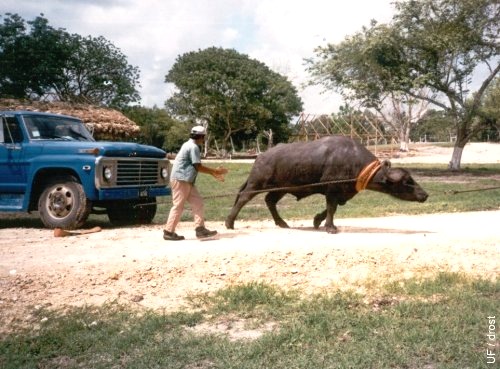
"Tow Truck"
Buffalo pulling a stalled truck out of its predicament.
Cripe WS (1983)
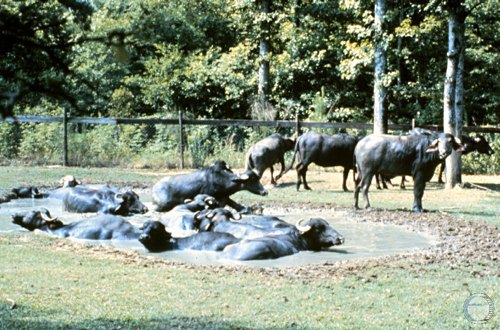
Wallow.
Where there is a low spot with water in it the buffalo will create a wallow.
Drost M (1985)
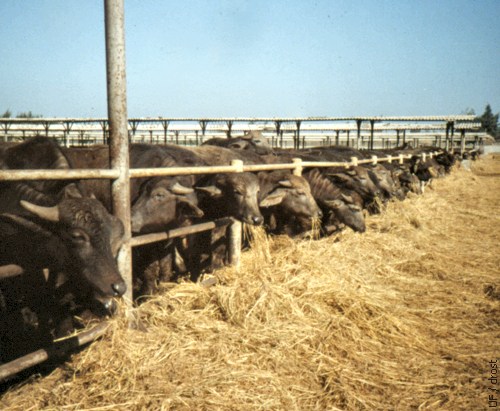
Feedlot.
Young buffalo in a dry feedlot near Cairo, Egypt. Shade structures are present in the background.
Drost M (1985)
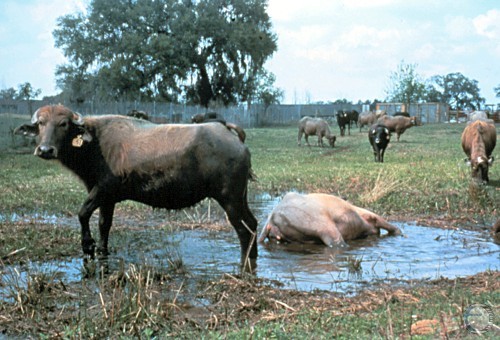
Pasture Scene.
Buffalo love to wallow in shallow bodies of water as illustrated in this pasture scene.
Drost M (1985)
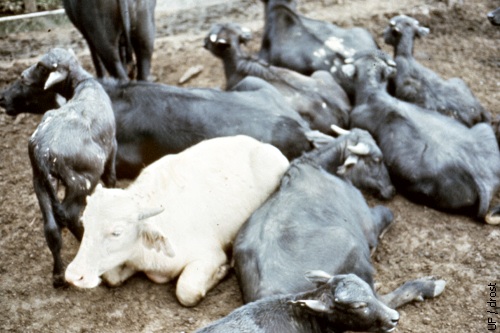
Albino Buffalo.
Albino in a group of heifers. A true albino has a red, non-pigmented eye.
Vale WG (1987)

Crossing a Flooded Area.
Swamp buffalo crossing a flooded area in Australia.
Drost M (1984)
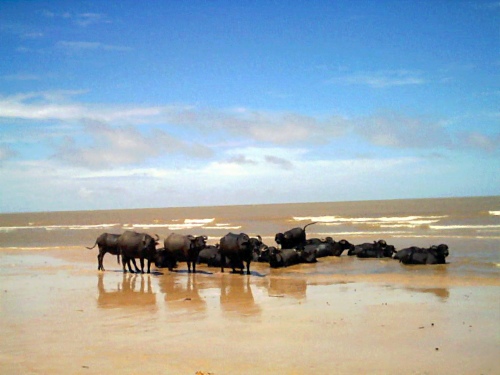
Standing in the Surf.
River buffalo standing in the surf near the Amazon delta.
Vale WG (2007)

Winter Time.
River buffalo adapt well to cold climates. Notice protective hair growth.
Vale WG (2007)
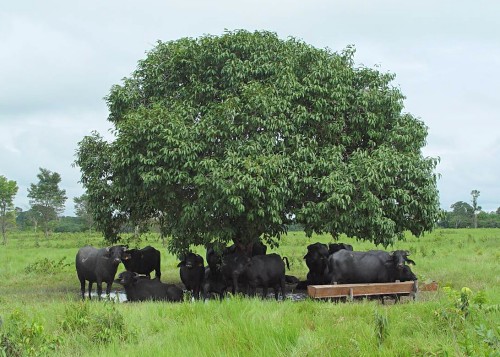
Shade.
During the summer, buffalo seek shade and a wallow in the heat of the day.
Vale WG (2007)
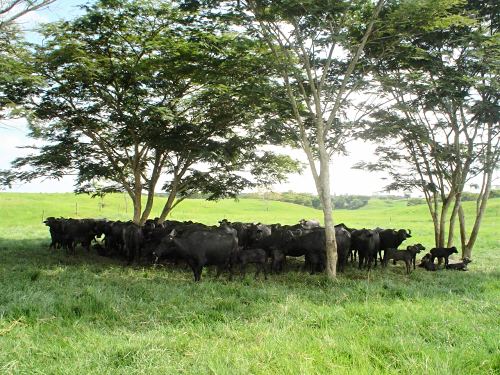
Shade Cover.
During the summer, buffalo seek shade in the heat of the day.
Vale WG (2007)
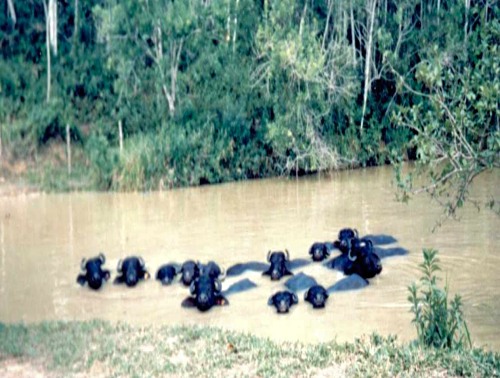
Cooling Off in the River.
River Buffalo enjoy access to bodies of water.
Vale WG (2007)
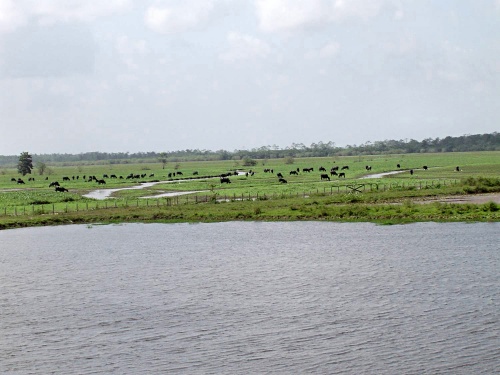
Access to the River.
River Buffalo enjoy access to bodies of water.
Vale WG (2007)
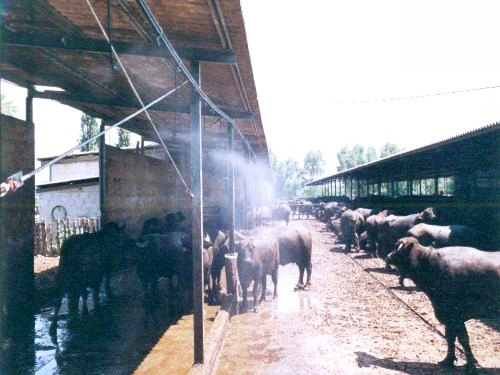
Sprinkler System.
In confinement on the farm the buffalo can be kept cool with a sprinkler system.
Vale WG (2007)
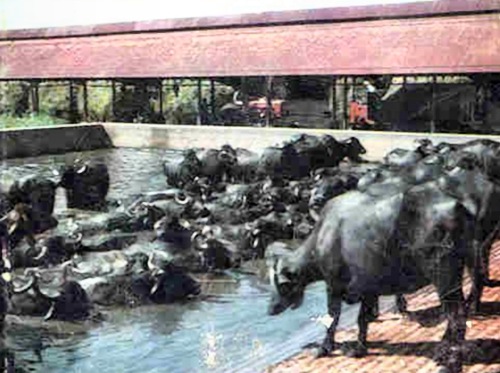
Wading Pool.
On-farm wading pool to keep the milking herd cool during the summer.
Vale WG (2007)
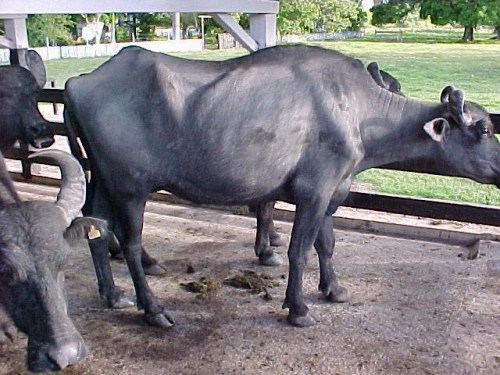
Thin Buffalo.
Ribs, hip bones, and pin bones are prominent in this cow. Her Body Condition Score (BSC) is 2 [on a scale of 1 to 5: 1 = skinny; 5 = obese].
Vale WG (2007)
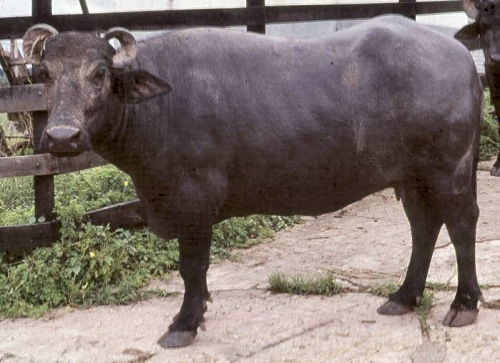
Fat Buffalo.
Ribs, hip bones, and pin bones are well covered in this cow. Her Body Condition Score (BSC) is 4 [on a scale of 1 to 5: 1 = skinny; 5 = obese].
Vale WG (2007)

Feeding on a Large Farm.
Hay was dispensed from a feed truck on this large commercial farm.
Vale WG (2007)
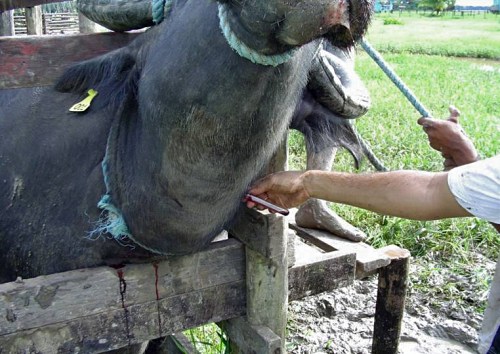
Taking a Blood Sample.
A blood sample is taken from the left jugular vein.
Vale WG (2007)
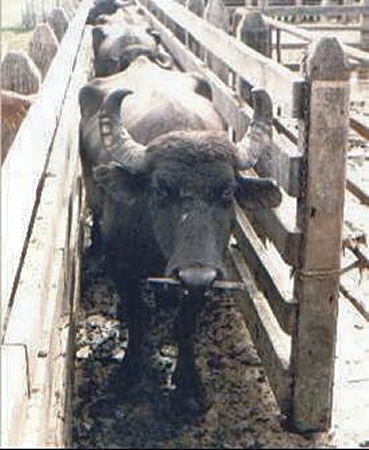
Restraint Device.
A short stick has been inserted through the nasal septum to serve as a restraint device. Metal bull-rings are used more commonly for this purpose.
Vale WG (2007)

